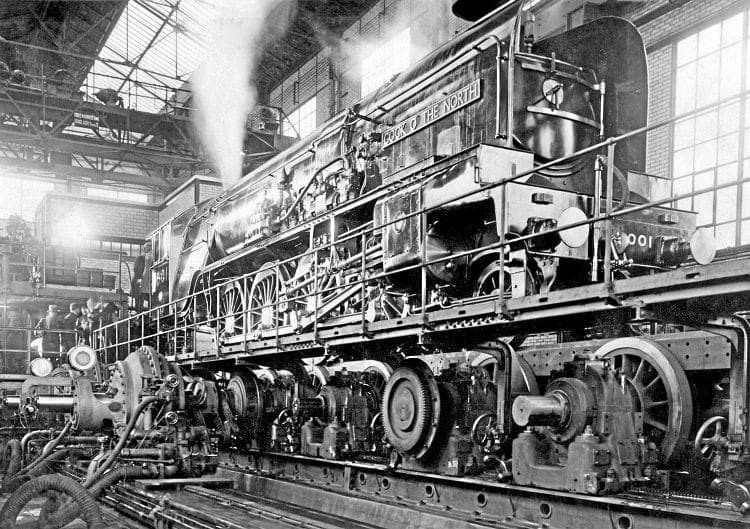The P2 Steam Locomotive Company, currently building the new P2 locomotive Prince of Wales, claims that “the Gresley class P2 2-8-2 Mikados were the most powerful express passenger locomotives to operate in the UK.”
This claim is repeated (twice) in the progress report on the project on page 26 of issue 224.

However I’ve never seen the evidence to support this claim, and it has always been my understanding that the LMS Duchesses were the most powerful.
Enjoy more Heritage Railway reading in the four-weekly magazine.
Click here to subscribe & save.
By evidence I mean any published results of indicator or dynamometer car testing, or the testing which was carried out on P2 No. 2001 at the Vitry locomotive testing plant in France.
Can anybody point me to this evidence, please?
Andy Young,
Preston, Lancashire
■ When built, No. 2001 was the most powerful locomotive in use in the UK both in terms of tractive effort (43,462lb) and equivalent drawbar horsepower (EDHP) – a maximum of 2100 EDHP was recorded during the dynamometer car tests.
The greatest known output to date by any UK passenger locomotive was on the testing of Duchess of Abercorn in 1939 when an indicated (cylinder) horsepower (IHP) of 3300 was achieved for five minutes – I have not seen the actual EDHP produced but would estimate it to be around 2640.
Based on the performance assessments by the late Mike Notley using the well known formulae for calculating train resistance at given speeds and gradients, Tornado has several times produced around 2350 to 2400 EDHP on Stoke bank at around 70mph and the highest known of 2520 EDHP at around 63mph on Beattock.
According to Mike, this equates to approximately 3150 IHP. This is consistent with extrapolation of the dynamometer car speed vs EDHP curves obtained during the 1948 A1/A2 comparative tests – extrapolation is necessary as the tests were not aimed at achieving the absolute maximum outputs.
No. 2007 Prince of Wales will have the same boiler type as Tornado (which was able to keep up with the steam demands in all these cases above with boiler pressure at or near the red line and the safety valves lifting when the regulator was partially closed). The cylinder diameter will be 19¾in as opposed to 19in with the A1 – an increase in area of 8% with the same 250psi boiler pressure as Tornado.
Provided we succeed in optimising the poppet valves to a higher standard than on No. 2001, and with increased steam passage cross sections and more rigorous application of Chapelon principles on internal streamlining, I am confident that No. 2007 will produce significantly more EDHP than Tornado or the Duchess.
To exceed the Duchess we need only 6% more EDHP. Tornado has a piston area just under 1% less than the Duchess, but has the benefit of 10 years more development of steam locomotive thermodynamics and of course the far more advanced Kylchap exhaust system. With No. 2007 we will have a cylinder area 7.5% larger than the Duchess which should readily achieve our claim of building Britain’s most powerful passenger locomotive (without leaving a trail of dead firemen at the track side)!
David Elliott,
director of engineering,
The A1 Steam Locomotive Trust
Read more letters, opinion, news and views in Issue 226 of HR – out now!
Advert
 Enjoy more Heritage Railway reading in the four-weekly magazine. Click here to subscribe.
Enjoy more Heritage Railway reading in the four-weekly magazine. Click here to subscribe.











